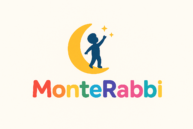Let’s face it. Whenever you take your kid to the speech therapist, there’s no magic wand they wave, right?
They just play the whole session away!
And once the session is done, you get handed a hefty invoice and told to come back again the next day.
And that sucks!
When I realized this, I made a promise to play more — a lot more — with my son Nicholas, who was speech delayed.
Of course, that meant cutting down my after-work hangouts with the boys, spending more weekends outdoors with him, and even applying for work-from-home jobs so we could have more time together — just the two of us, playing our days away.
Most of the games we played weren’t expensive at all. Some were completely free — little DIY games we made together and laughed our hearts out playing. Others were cheap, and I’d often swap them with my neighbors once Nicholas got bored.
What is the importance of play for Children with Speech Problems?
Playing games turned out to be one of the best decisions ever. Not only were we having fun, but his communication and confidence started growing right before my eyes.
That’s the beauty of play — it strengthens connection, builds social skills, improves attention, and helps kids learn to express emotions. Whether your child has speech delay, autism, or struggles with social interaction, play can be a powerful way to connect and grow together.
And the best part? You don’t have to stick to strict rules. Feel free to tweak the games to fit your child’s level — bend the rules, change them, make new ones! The secret is being creative and having fun together.
In this article, I’ve shared some of the games and toys that worked wonders for us. Try them out, adapt them to your child’s needs, and see what happens when you turn everyday play into a little bit of therapy magic.
12 Fun Games to Help Late Talkers Talk
1. Guess who and where are you?
When I first started looking for games to help Nicholas with his speech, I didn’t want anything that felt like therapy. I just wanted fun, simple games that would get him talking, laughing, and thinking — and that’s when I discovered Guess Who and Where You Are.
? Guess Who
Now this one — Guess Who — became an instant favorite in our house. It’s a classic two-player game where each person has to guess the mystery character the other is thinking of by asking yes or no questions.

What I love about it is how it encourages question formation and descriptive language without Nicholas even realizing he’s practicing speech.
He’d ask things like:
? “Does he have glasses?”
? “Is she wearing a hat?”
? “Is his hair brown?”
At first, it was just fun — but over time, his sentences became clearer, and his confidence shot up. I started noticing how he was thinking before speaking, choosing his words carefully, and even laughing when I picked the wrong character.
Sometimes, I’d switch things up to make it even more engaging — like using family photos or cartoon characters instead of the game cards. That made it personal and more relatable.
So yes, Guess Who is more than just a game — it’s a sneaky little speech therapy tool that builds confidence, vocabulary, and social interaction.
?️ Where You Are
Then came Where You Are, another gem that focuses on giving and following directions. It’s like a mini treasure hunt where you guide each other through locations or scenarios.
For Nicholas, this game worked wonders in helping him understand spatial concepts like “under,” “next to,” “behind,” and “between.”
For example, I’d say,
? “Put the teddy under the chair.”
? “The ball is behind the couch.”
And he’d have to act it out. The joy in his face when he got it right was everything.
Later, I’d let him give me the instructions — which turned into hilarious moments like,
? “Daddy, sit on the cat!”
But through all the laughter, he was learning to communicate clearly, sequence his thoughts, and follow multi-step instructions — skills that were once hard for him
2. Blurt
If Guess Who helps with asking questions and Where You Are works wonders for giving directions, then Blurt! is that one game that helps kids find their words fast — literally.
I first got Blurt! because someone in a parenting group mentioned it’s “the game that makes even quiet kids talk too much.” And honestly? They were right.

The idea is simple: someone reads a clue like,
“What do you use to brush your teeth?”
And everyone races to shout out the answer — “Toothbrush!”
Whoever “blurts” it first wins the round.
At first, Nicholas would hesitate. He’d think hard, mumble, and miss his turn. But as we played more, I started to see something shift — he began blurting faster, pronouncing words more clearly, and even laughing when he beat me to it.
What I love most about Blurt! is how it builds quick thinking and word recall. Kids learn to connect clues to familiar objects or actions fast — which is exactly what they need in real conversations.
Sometimes, I’d make our own “home version” to suit his level — using clues about things around us like:
- “You wear it on your feet.” (Shoes!)
- “You eat it with a spoon and it’s cold.” (Ice cream!)
- “It has four wheels and goes vroom.” (Car!)
Those moments weren’t just about winning the game — they were about connection, laughter, and watching my son find his voice one word at a time.
The beauty of Blurt! is that it doesn’t feel like therapy at all. It’s noisy, fast, fun, and super engaging — which is perfect for kids who struggle with speech or expressive language because it pushes them to speak without pressure.
3. Hedbanz
Then there’s Headbanz, the ultimate family chaos game — in a good way!
The first time we played it, Nicholas couldn’t stop laughing. Imagine wearing a headband with a picture card on it that you can’t see, while everyone else does. Your job is to figure out what’s on your card by asking yes or no questions.
For example, he’d ask:
? “Am I an animal?”
? “Can I fly?”
? “Do I live in water?”
And we’d answer with straight faces — which, of course, made it even funnier when he finally guessed right.
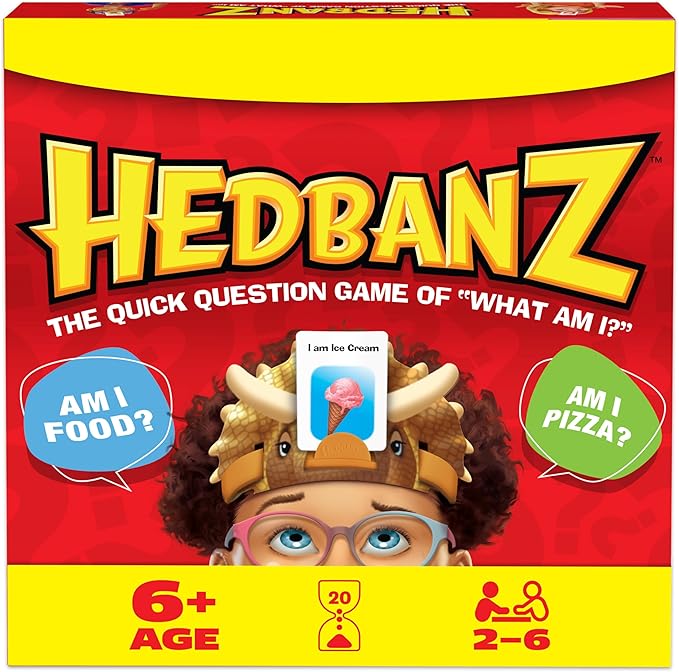
What makes Headbanz amazing for speech development is how it naturally pushes kids to:
- Form complete questions
- Use descriptive language
- Pay attention to clues
- Practice turn-taking and social interaction
It’s not just about guessing what’s on your head — it’s about thinking out loud, learning how to build sentences, and understanding how conversation works.
I noticed Nicholas’s confidence grow every time we played. He started experimenting with new words and began understanding categories like animals, food, or objects — something he had struggled with before.
Sometimes we’d switch things up: I’d let him make the cards using drawings or magazine cutouts. That little tweak gave him ownership of the game, and it turned into a full creativity exercise.
The best part? He never once saw it as “speech practice.” For him, it was just another fun evening with dad. For me, it was magic in disguise.
4. Pick and Draw
Now, one game that surprised me the most was Pick and Draw. It looks so simple at first — just a deck of cards with different facial features like eyes, noses, and mouths. But the magic happens when you start combining them.
Each card you draw tells you what to add next — maybe a funny nose, curly hair, or tiny eyes. Before you know it, you’ve created a hilarious character that looks nothing like what you imagined.
For Nicholas, this game was more than just drawing — it became a way for him to express ideas, use adjectives, and build stories around his creations.
He’d draw a character and say things like,
? “He looks angry!”
? “This one is happy because he got ice cream.”
? “This one is tired — he didn’t sleep!”
At first, it was just describing pictures, but over time it turned into full-blown storytelling. He started naming his characters, giving them jobs, families, and even wild adventures.

What I love most about Pick and Draw is how it teaches kids to think creatively while also using emotion words, descriptive language, and sequencing — without them realizing they’re practicing speech at all.
It’s also perfect for quiet afternoons. Sometimes we’d sit together, pick our cards, draw our characters, and then take turns telling each other their stories. Those moments were golden — full of laughter, imagination, and connection.
5. Hello Sunshine and Roll and Play
After blocks, we discovered a game called Hello Sunshine, and honestly, it’s one of the sweetest games we’ve played.
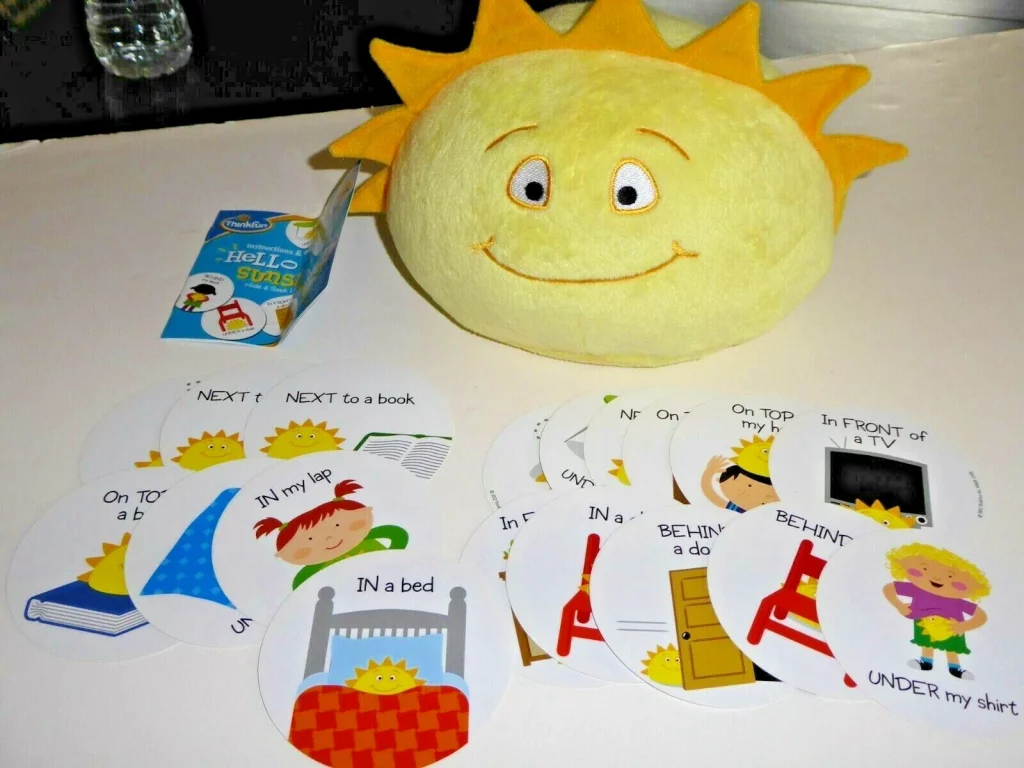
It comes with a soft plush sunshine toy and a deck of picture cards that tell you where to hide it — like under the bed, on the chair, or behind the couch.
At first, Nicholas just loved the hiding part. He’d hide Sunshine and laugh his heart out watching me look in all the wrong places. But slowly, I noticed how much language was happening in that laughter.
He was learning spatial words like under, behind, next to, and in front of.
He was understanding questions like “Where is Sunshine?”
And he was using sentences to describe what he did —
? “I hid it under the pillow!”
? “It’s behind the door!”
It’s such a simple game, but it builds core speech and comprehension skills — all wrapped in joy and giggles.
Some days, we’d make up our own rules: I’d ask him to describe where he hid it using clues instead of saying it directly. That’s when it became even more fun — he had to think, form sentences, and use logic.
By the end of each round, we weren’t just finding a plush toy. We were finding words.
? Roll and Play — The Game That Makes Learning Feel Like Playtime
Then came Roll and Play, which became our go-to game on slow afternoons.
It’s such a clever idea — a big, soft cube with colored sides and matching cards. You roll the cube, pick a card that matches the color, and follow the simple instruction.
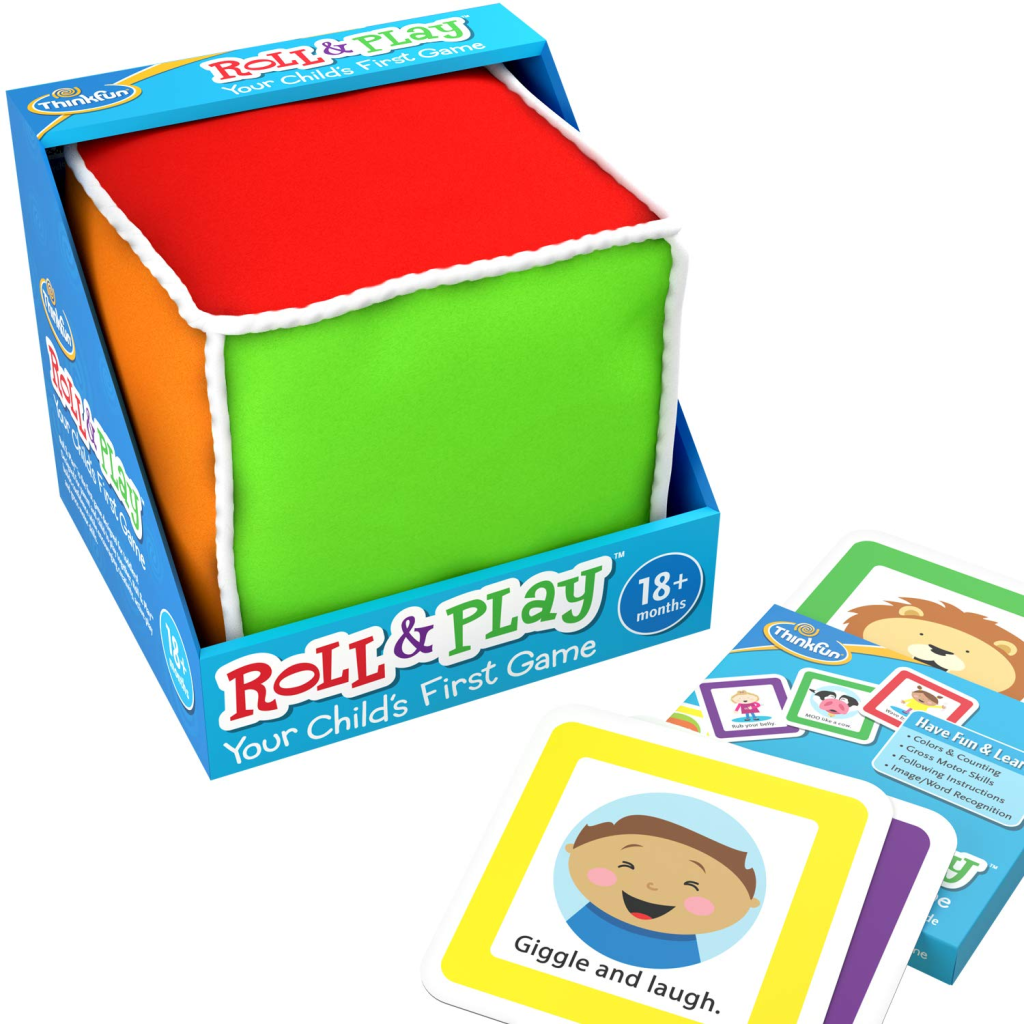
Things like:
? “Make a happy face.”
? “Bark like a dog.”
? “Find something red.”
? “Clap your hands.”
Every card encourages movement, expression, and language — all in one go.
For Nicholas, this was huge. He was learning to listen, understand, and respond — key parts of everyday communication. And because the game mixes physical activity with words, it kept his attention way longer than any flashcard ever could.
I especially loved watching how it helped him connect emotions with words — when the card said “Show a sad face,” he’d pout dramatically, then burst out laughing. Those moments weren’t just cute; they were building his emotional vocabulary, too.
And honestly, the laughter that filled the room during those sessions was priceless.
6. Treasure Hunt
If there’s one game that made Nicholas light up every single time, it was Treasure Hunt.
There’s just something magical about hunting for hidden treasures — especially when the clues are made by someone who knows exactly what will make your child giggle.
At first, our treasure hunts were simple. I’d hide a toy somewhere in the house and say,
? “Go to where we keep the shoes.”
? “Look under the table.”
? “Check behind the curtain.”
He’d run around laughing, guessing, and talking — and every time he found the treasure, he’d shout with joy.
But over time, I started making the clues more interesting and language-rich. I’d rhyme them, make them into short sentences, or even silly riddles:
“I’m soft and warm, where you lay your head — find me fast under your bed!”
That’s when I realized how powerful this game really was. He was:
- Listening carefully to instructions,
- Practicing comprehension and problem-solving,
- Repeating clues out loud,
- And learning new vocabulary in context.
The best part? He didn’t even realize he was working on his speech — he was just chasing treasures with Dad.
Sometimes I’d flip the roles and let him create the clues for me. That was where the real growth showed. He’d have to think about directions, sentence structure, and sequencing — all on his own.
And trust me, some of his clues made absolutely no sense, but that’s what made it fun. We’d laugh about it, fix it together, and try again.
By the end of each treasure hunt, it wasn’t just the toys he found — it was his confidence, vocabulary, and ability to express himself that had grown the most..
Related: Cause and effect toys for speech therapy at home
7. Blocks
You know those simple colorful building blocks? The ones we always underestimate because they seem too basic?
Well, they turned out to be one of the most powerful tools in helping Nicholas find his words.

At first, he’d just stack them aimlessly — build a tower, knock it down, laugh, and move on. But one day, I decided to turn it into a little language game.
As he built, I’d describe what I saw:
? “You made a tall tower!”
? “That block is red.”
? “Let’s put the square one on top of the long one.”
Before long, he started copying me — repeating words, correcting me (“No, Daddy, that’s blue!”), and even giving me instructions.
Soon, it became part of our routine. We’d sit on the floor together, surrounded by blocks, and I’d ask him questions like:
- “Which block should go next?”
- “Can you find the biggest one?”
- “What color should we use for the roof?”
Through all that play, he was practicing describing, categorizing, sequencing, and planning — things that speech therapy often targets, but in the most natural, fun way possible.
Then we took it a step further — we started imagining.
We’d build a house, then describe who lived inside.
We’d make a bridge, then talk about the cars driving over it.
We even built castles for his toy animals and came up with stories about them.
That’s when it hit me:
These little blocks weren’t just helping him talk — they were helping him think, plan, and express.
And honestly? Some of our best conversations happened right there on the floor, surrounded by blocks, imagination, and love.
8. Reading
Reading might sound like a quiet activity, but when done right, it’s one of the best speech games you can play with your child. Books with illustrations and predictable text are especially great for developing expressive language.
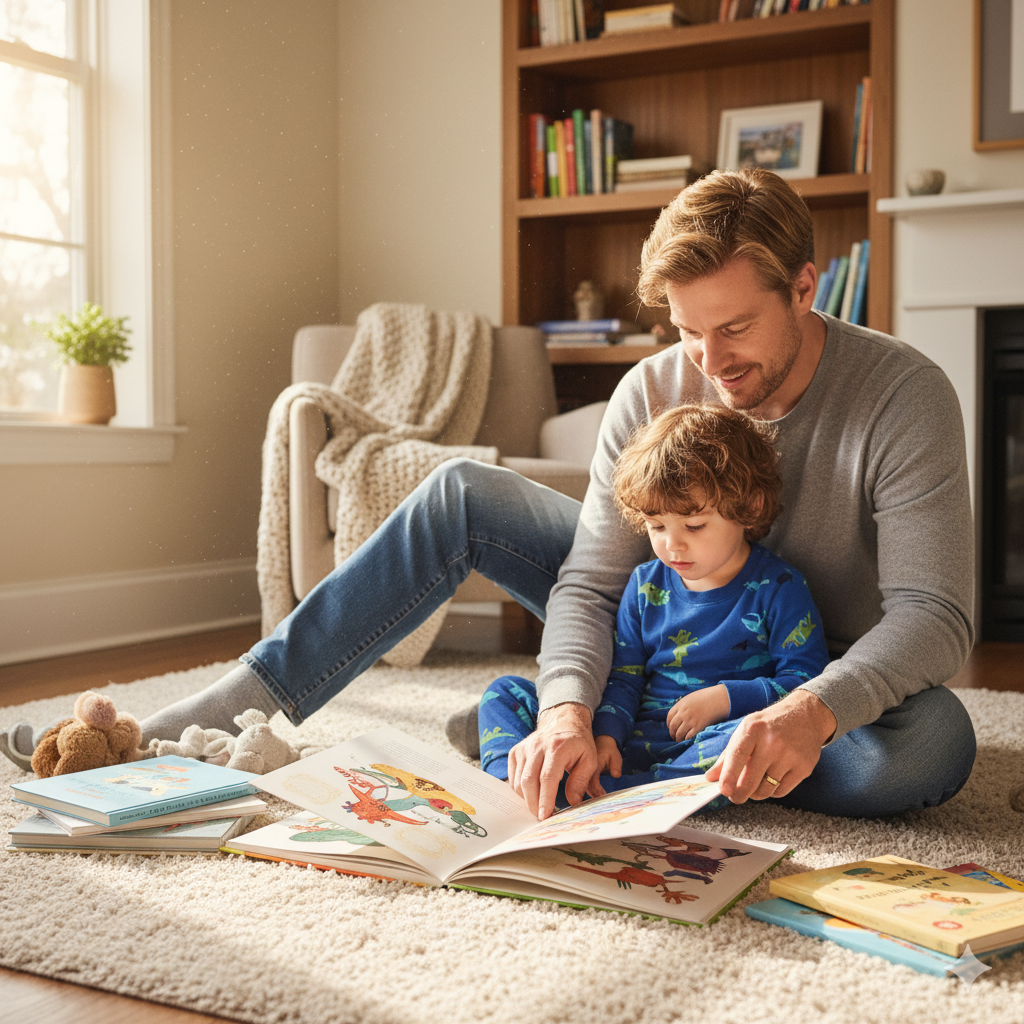
Start by reading a page out loud, then let your child take a turn reading to you — or even just describing what’s happening in the pictures. Encourage them to name what they see, and expand on their words. For instance, if they say “cow,” you can say, “Yes! A big white and black cow!”
You can also turn reading time into a guessing game. Pause and ask, “What do you think will happen next?” This builds prediction skills and early storytelling.
Don’t worry about reading the same book over and over — in fact, that’s the best way for your child to absorb vocabulary, grammar, story structure, and confidence. The more familiar the book becomes, the more expressive your child will get when retelling it.
So yes, reading can be a game too — one that grows your child’s speech every single time you play it.
9. What’s in the Cat’s Hat
And then there’s What’s in the Cat’s Hat? — the game that turned Nicholas into the most curious detective in the house.
If you know The Cat in the Hat from Dr. Seuss, you can already guess how wild this game gets. You hide a mystery object inside the Cat’s big red-and-white striped hat, and the kids have to guess what it is by asking questions, shaking it, feeling it, or listening closely.
At first, Nicholas just blurted out random guesses like:
? “Is it a ball?”
? “Is it a toy car?”
But slowly, he started asking smarter questions:
? “Is it soft?”
? “Can I eat it?”
? “Does it make a sound?”
And that’s when I realized how powerful this game really was — it was training him to ask better questions, use descriptive language, and make logical connections.

The best part? It taps right into a child’s natural curiosity. Every time he picked up the hat, his face would light up with that “I’ve got to know what’s inside!” look. That motivation made him want to talk more.
Sometimes I’d make it even more exciting by switching the rules: I’d let him hide something in the hat and I’d be the one to guess. That flipped the dynamic completely — suddenly, he was the one describing, giving clues, and controlling the game.
He’d giggle so hard trying not to give away the secret, and through all that laughter, he was learning how to:
- Describe objects,
- Understand categories,
- Use adjectives,
- And build sentences naturally.
It’s one of those games that reminds you — kids don’t need fancy flashcards or strict drills. They just need fun ways to talk.
10. Body Parts Game
The body parts game is perfect for kids of almost all ages — from babies just starting to babble to preschoolers learning to form sentences. It’s simple, playful, and can fit right into your daily routine.
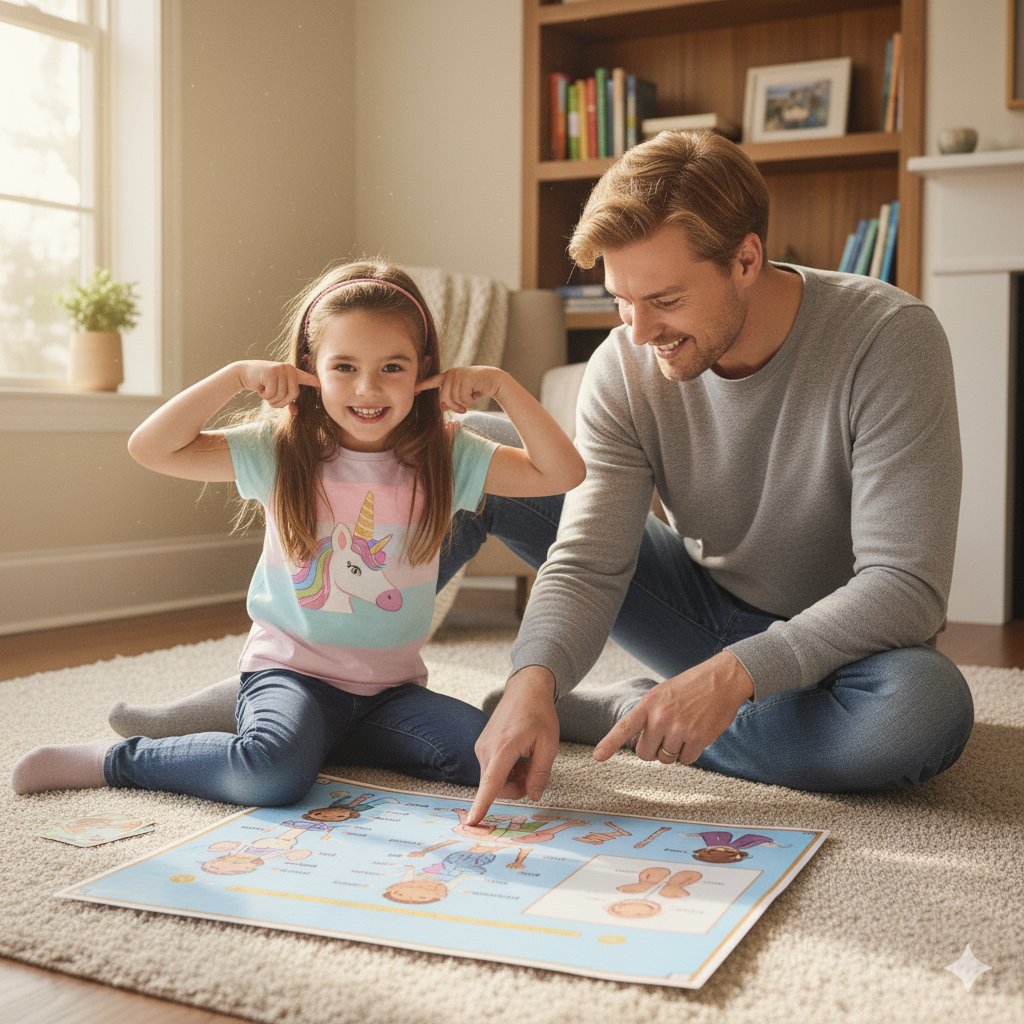
You can name body parts while doing everyday things like:
- Bath time: Name your child’s body parts as you wash them — “This is your tummy! Here are your knees!”
- Diaper changing: Tickle their belly, nose, or feet as you mention them. It keeps them giggling and learning at the same time.
- Playtime: Use stickers on your child’s favorite dolls or teddy bears and name each body part together — kids love this one!
- Singing time: Sing “Head, Shoulders, Knees, and Toes” together. Songs make learning stick.
As your child grows, you can switch things up — ask them to point to the body part you name, or even better, name it themselves. It’s a fun, natural way to build vocabulary, listening skills, and body awareness.
11. Meal Time Games
If mealtime can help build language for your kid, go for it! It’s one of the easiest and most functional times to encourage speech.
Here’s how to play the mealtime game: when your child is eating more than one type of food, offer two choices before each bite and then pause for a response. For example, you might ask, “Do you want banana or yogurt?” Wait for your child to answer, point, or make a sound — any attempt at communication counts.
The key here is patience. Don’t frustrate your child by insisting on a perfect word or dragging it out too long. Once they’ve shown a preference, give them that food immediately, then repeat the choice after a few bites.
This little game teaches your child to make choices, express preferences, and use words meaningfully — all while enjoying their meal.
12. Counting Games
Using simple games, you can help your baby learn numbers just by counting out loud during everyday activities. You don’t need flashcards or fancy toys — your voice and a little consistency are all it takes.
Start by counting out loud to your child every day. The repetition helps your baby tune into the rhythm and pattern of numbers, even before they understand what counting means.
Here are some fun and easy ways to include counting in your routine:
- At the grocery store: Count how many oranges or apples you’ve bought.
- During playtime: Count your baby’s fingers and toes — it’s sweet and playful!
- Around the house: Count each stair step as you carry your baby upstairs.
These small, everyday moments help your child build a foundation for numbers while also improving their listening, attention, and speech skills.
